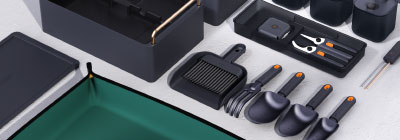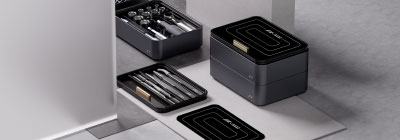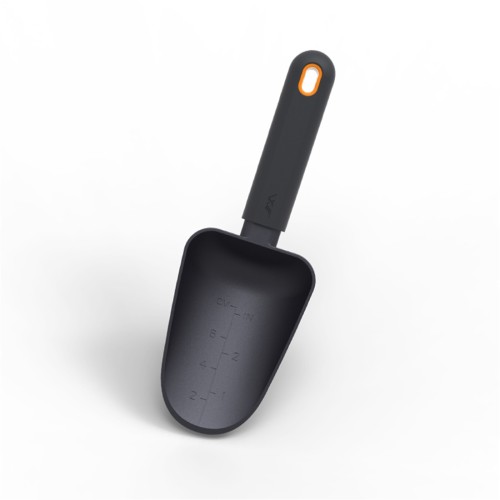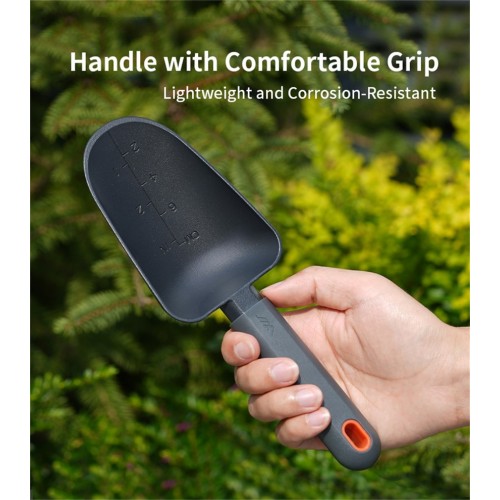
Keep Your Garden Tools Sharp, Clean, and Rust-Free: A Complete Care Guide
Every gardener knows that the difference between a pleasure and a chore often comes down to the tools. A dull, rusty spade or a sticky pair of pruning shears makes tasks harder, slows you down, and can even damage plants. Keeping your garden tools in top condition not only saves you money in replacements, but also makes your work cleaner, safer, and more satisfying.
In this guide, we’ll cover a full maintenance routine—from cleaning and rust prevention, to sharpening, lubrication, and smart storage—that any gardener can follow.
1. Clean After Every Use — Don’t Skip It
The simplest, most essential step is also the one many gardeners neglect:
-
Rinse soil off digging tools immediately (spades, forks, hoes). Use a hose or pressure spray and a stiff brush.
-
For pruners, shears, or tools that touch plants, wipe off sap, plant debris, and moisture. Use soapy water to wash blades.
-
After cleaning, thoroughly dry every metal surface before storing.
A regular habit of cleaning ensures grime, soil, and pathogens don’t accumulate and degrade your tools or spread disease in the garden.
2. Prevent & Remove Rust
Rust is the nemesis of metal tools. But maintenance can stop it before it takes over.
Preventing Rust:
-
After cleaning and drying, apply a thin coat of oil (e.g. boiled linseed oil, light machine oil) to steel parts.
-
Use the old-fashioned “sand-and-oil bucket” trick: mix coarse sand with oil in a bucket, and dip tools in.
-
Keep tools in a dry environment and preferably hung off the floor.
Removing Existing Rust:
-
Use sandpaper, a wire brush, or steel wool to scrub away light rust.
-
For heavier rust, soak the tool in diluted vinegar overnight, then scrub and rinse.
-
After rust removal, re-oil the surface to protect it going forward.
3. Keep Cutting Tools Sharp
Tools with edges—pruners, shears, axes—require regular sharpening to stay effective and safe.
-
Sharp blades make clean cuts, which heal faster on plants and reduce disease risk.
-
Use sharpening stones, files, or specialized sharpeners. Maintain the original bevel angle.
-
Shovels and hoes might need only light touch-ups.
-
After sharpening, wipe off metal dust and apply a thin oil coat.
4. Lubrication & Moving Parts Care
Many garden tools have pivots, springs, or hinges that benefit from lubrication.
-
Apply a drop of penetrating oil to pivots (e.g. pruners, shears).
-
Wipe off excess oil to avoid attracting dust.
-
Clean inside joints before re-oiling.
5. Maintain Handles & Grips
Handles may be wood, fiberglass, or metal, and each requires attention:
-
Wooden handles can dry or crack. Sand rough spots and apply boiled linseed oil.
-
Replace or repair cracked handles promptly.
-
Metal and plastic handles just need cleaning and inspection.
6. Smart Storage & Organization
How and where you store tools matters:
-
Store indoors in a dry, ventilated area.
-
Hang tools by handles to reduce moisture contact.
-
Use racks, pegboards, or tool walls.
-
Store smaller tools in cases or boxes to protect edges.
7. Routine Maintenance Schedule
Think of tool care as a ritual, not a chore:
-
After every use: Clean, dry, wipe with oil
-
Weekly / Monthly: Sharpen blades, oil pivots, check handles
-
Seasonal (spring/fall): Deep clean, repair damage, re-oil handles, remove rust
-
End-of-season: Final cleaning, disinfection, safe storage
8. Knowing When to Retire a Tool
Sometimes tools reach their limit:
-
Replace if metal is warped or cracked.
-
Retire if the handle is damaged beyond safe use.
-
Recycle old parts instead of leaving unsafe tools around.









Leave a Comment